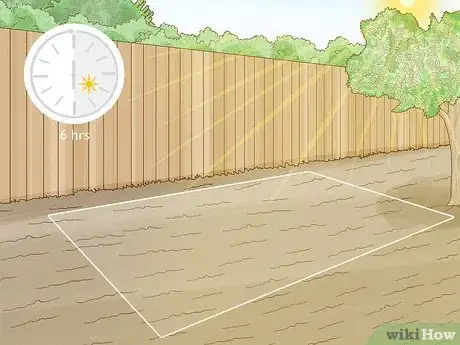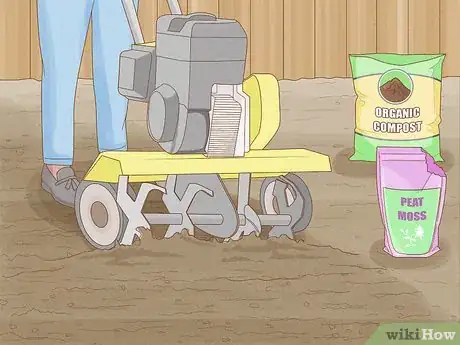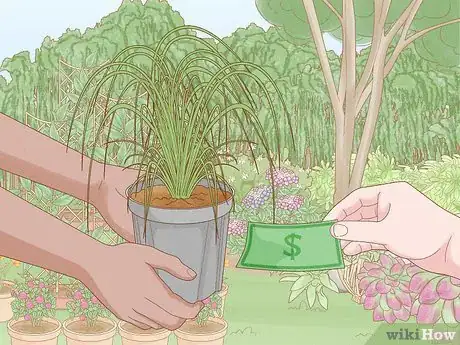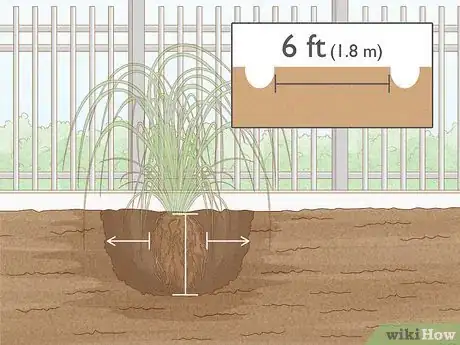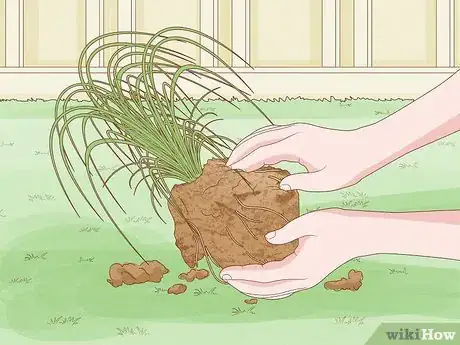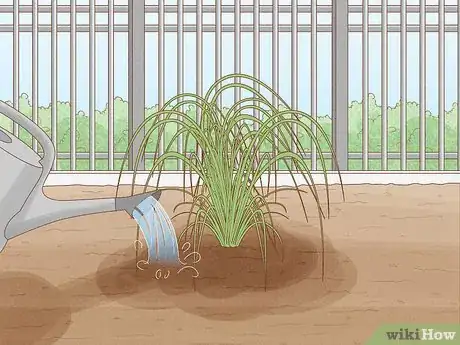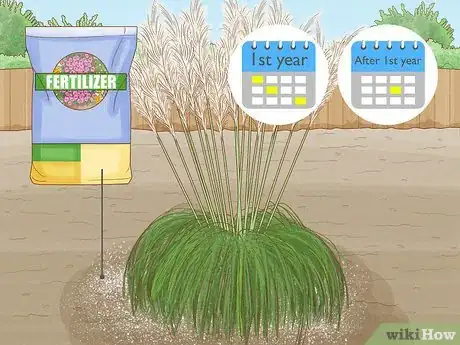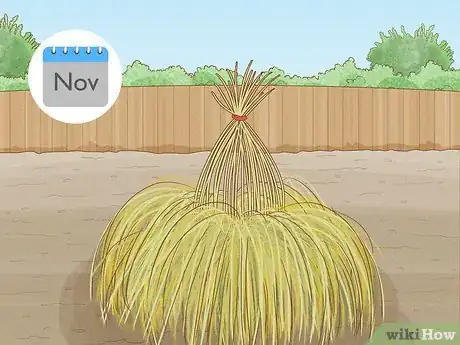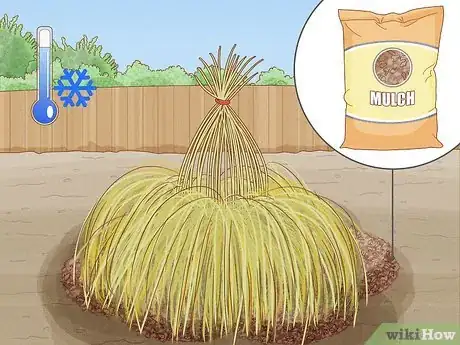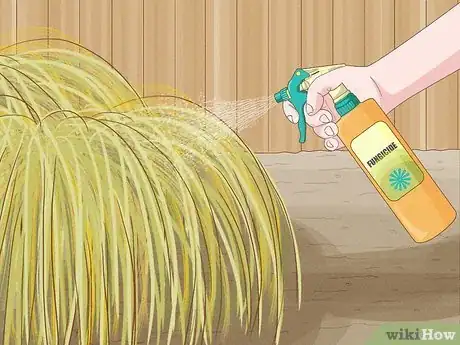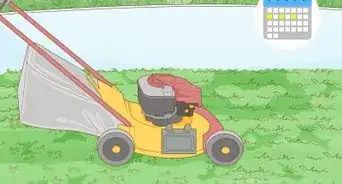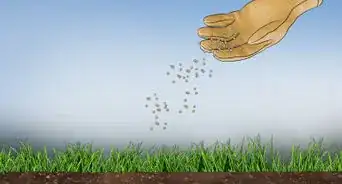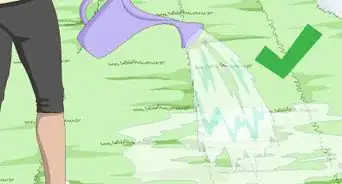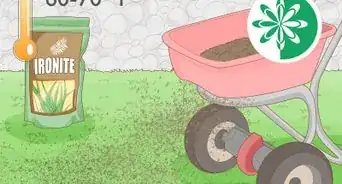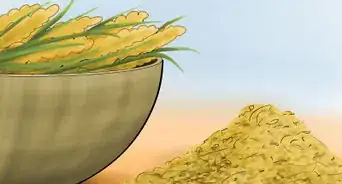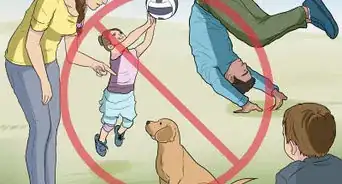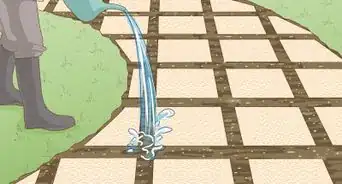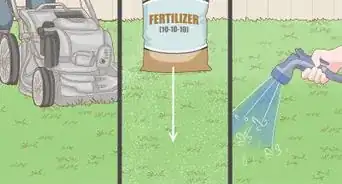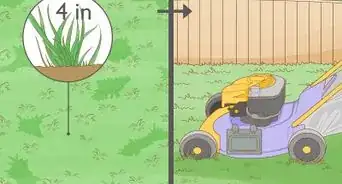This article was co-authored by Grant Wallace and by wikiHow staff writer, Sophia Latorre. Grant Wallace is a Landscaper and Owner of Grantlanta Lawn in Atlanta, Georgia. With over seven years of experience, he specializes in lawn maintenance and landscape installation. In 2012, he earned his BA from the University of West Georgia. Grant has been profiled in Shoutout Atlanta, Canvas Rebel, and Voyage ATL.
wikiHow marks an article as reader-approved once it receives enough positive feedback. This article received 15 testimonials and 100% of readers who voted found it helpful, earning it our reader-approved status.
This article has been viewed 273,447 times.
Pampas grass has made its way onto the invasive weed list in California and Texas, and been completely banned in New Zealand and Hawaii due to its ability to thrive and take over an area. However, many people in other locations use this ornamental grass with large plume-like flowers to decorate their yards, gardens, and pool areas.[1] To grow pampas grass, choose a sunny location with fertile soil, plant young pampas grass plants or seeds, occasionally water, fertilize, and prune your grass, and watch it thrive.
Steps
Preparing to Plant
-
1Plant pampas grass in spring.[2] Your grass will need lots of sun, and only a small amount of water, so planting in fall or winter months could hinder your grass’s growth.[3]
- Because pampas grass grows so large, it grows better outside in the lawn or garden, rather than in containers. Due to its size and also the sharpness of its leaves, it does not make a good indoor plant.
-
2Choose a location. You’ll want a spot with plenty of room as pampas grass grows tall as well as spreads wide. Choose an area with full sun to partial shade.[4] Locations receiving at least 6 hours of sunlight daily are best for maximum growth.[5]
- This grass can grow to be over 10 ft (3 m) tall. It makes for an excellent natural fence.
- Do not place pampas grass near roadways or driveways; the tall and bushy grass can interfere with lines of sight.
- The plant should also not be placed too close to central air conditioning units as the long leaves can become caught in the fans.
- Pampas grass leaves have sharp edges, so avoid planting in an area where young children play.
Advertisement -
3Prepare the soil. Pampas grass grows best in areas with well-drained, fertile soil. Till the soil to aerate it then add an organic compost, peat moss, or manure to help fertilize the grass. Choose a loamy variety to ensure the soil will drain well.[6]
Planting Your Grass
-
1Plant seeds. If you’d like to plant seeds rather than young plants, sow them directly onto the prepared soil. They need light to germinate, so don’t cover them with soil. You can, however, rake the area lightly to prevent the seeds from blowing away or being eaten by birds. Water very lightly to ensure the seeds don’t wash away.[7]
- Seeds take between 20 and 25 days to germinate.
-
2Use young plants. Alternatively, you can plant young pampas grass instead of starting with seeds. Starting with young plants helps your pampas grass establish itself as well as grow quickly. You can find young pampas grass plants at many nurseries, garden shops, and even hardware stores. If you can’t find it locally, order it online.
-
3Dig holes. Using a shovel, dig holes that are three times as wide and three times as deep as the root system on your young pampas grass plant. This will give the roots room to spread and establish themselves. This species grows rapidly, so you’ll need to place holes at least 6 ft (1.8 m) apart if planting multiple clumps of pampas grass.[8]
-
4Spread the roots apart. Use your hands to gently separate the root ball. This will help your roots take hold in the soil as well as absorb moisture more easily.[9]
-
5Place the plant in the hole. Gently position the plant so that it is upright in the middle of the hole. Backfill the dirt around the plant. You can add sand to the soil if your chosen area does not drain well. Gently pat down the dirt or sand to ensure the plant is placed sturdily.
-
6
Caring for Your Grass
-
1Water sparingly. Pampas grass can thrive in many conditions, and will adapt to its location. You need only water the ornamental grass once every couple of weeks for the first year of growth. Water more frequently during periods of extreme drought. No watering is needed after the plant is well established.[12]
-
2
-
3Prune established pampas grass.[15] c Use trimmers to prune your grass in the late winter or early spring months. You can also tie a piece of rope around the plant, about 4 ft (1.2 m) from the ground and use a power weed trimmer to cut the grass. Remove all the foliage and flower stalks above 12 in (30 cm) in height.[16]
- Be careful and wear long sleeves and gloves when pruning and handling your pampas grass plants as the edges are sharp.
- Cut through the clumps after pruning to divide them. The sliced clump can then be planted elsewhere.
-
4Drain the leaves. Tie the leaves of the grass together with string in November to allow water to drain from the plant. This will prevent shock during the cold months.
-
5Cover the roots. If you live in an area where temperatures dip below freezing, you’ll want to put straw or mulch over the roots of your pampas grass before frost season. Alternatively, you can cover the roots with a fleece wrap.
-
6Keep an eye out for diseases and pests. Luckily, pampas grass is almost entirely disease-free. However, pampas grass can occasionally develop spots. Simply use a fungicide to quickly get rid it. Pampas grass is also rarely eaten by animals, but it can serve as a great habitat for them. Because of this, it’s a good idea to search your pampas grass from time to time to ensure that no unwanted guests are residing inside.
Expert Q&A
Did you know you can get expert answers for this article?
Unlock expert answers by supporting wikiHow
-
QuestionIs pampas grass invasive?
 Maggie MoranMaggie Moran is a Professional Gardener in Pennsylvania.
Maggie MoranMaggie Moran is a Professional Gardener in Pennsylvania.
Home & Garden Specialist
-
QuestionWhat is the zone for pampas grass?
 Maggie MoranMaggie Moran is a Professional Gardener in Pennsylvania.
Maggie MoranMaggie Moran is a Professional Gardener in Pennsylvania.
Home & Garden Specialist
-
QuestionHow much sun does pampas grass need?
 Maggie MoranMaggie Moran is a Professional Gardener in Pennsylvania.
Maggie MoranMaggie Moran is a Professional Gardener in Pennsylvania.
Home & Garden Specialist
Expert Interview

Thanks for reading our article! If you'd like to learn more about growing pampa grass, check out our in-depth interview with Grant Wallace.
References
- ↑ Maggie Moran. Home & Garden Specialist. Expert Interview.
- ↑ Maggie Moran. Home & Garden Specialist. Expert Interview.
- ↑ http://www.bbc.co.uk/lancashire/content/articles/2008/01/08/pampas_grass_feature.shtml
- ↑ Maggie Moran. Home & Garden Specialist. Expert Interview.
- ↑ http://www.gardenguides.com/79405-care-pampas-grass.html
- ↑ https://plantcaretoday.com/pampas-grass-care.html
- ↑ https://plantcaretoday.com/pampas-grass-care.html
- ↑ http://www.gardenguides.com/79405-care-pampas-grass.html
- ↑ https://plantcaretoday.com/pampas-grass-care.html
- ↑ Grant Wallace. Landscaper. Expert Interview. 6 December 2022.
- ↑ https://plantcaretoday.com/pampas-grass-care.html
- ↑ http://www.gardenguides.com/79405-care-pampas-grass.html
- ↑ Grant Wallace. Landscaper. Expert Interview. 6 December 2022.
- ↑ http://www.gardenguides.com/79405-care-pampas-grass.html
- ↑ Grant Wallace. Landscaper. Expert Interview. 6 December 2022.
- ↑ http://www.gardenguides.com/79405-care-pampas-grass.html
About This Article
If you want to grow pampas grass, start by planting the seeds in soil and watering them lightly so they don't wash away. Let the grass germinate for 20-25 days, then water it every couple of weeks during the first year. Provide the grass with fertilizer 3 times in the first year and 1 time per year thereafter. When your grass is well-established, prune the foliage and flower stalks with a trimmer. To learn how to prepare your soil for growing pampas grass and how to look out for diseases, keep reading!


